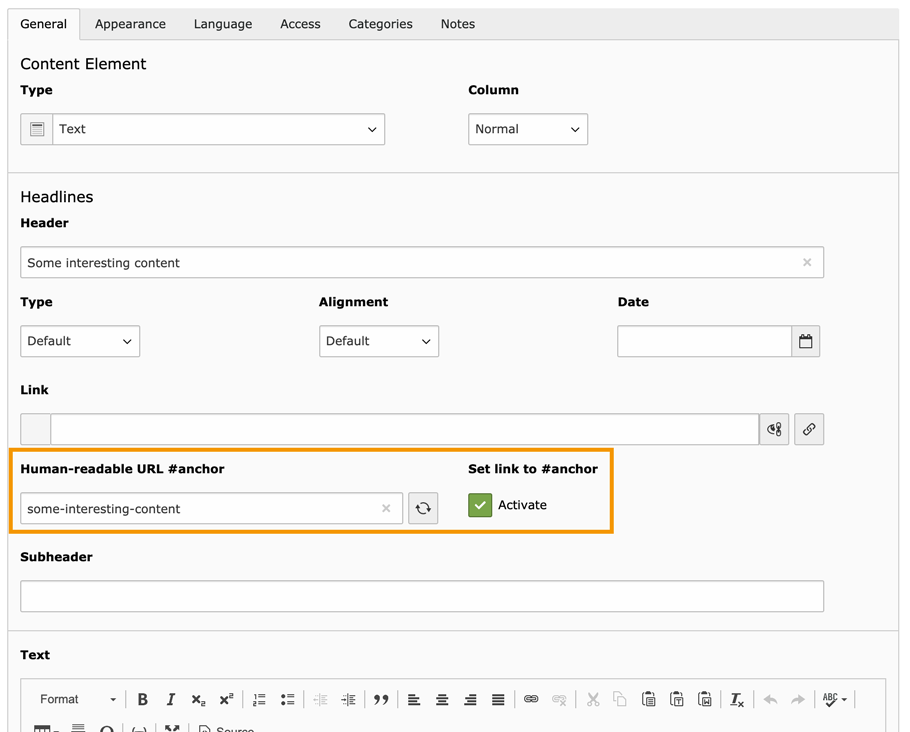sebkln / content-slug
Speaking URL fragments (anchors) - Adds a slug field for human-readable anchors ("domain.com/page/#my-section") to TYPO3 content elements. By default, this anchor is rendered as the header's id attribute.
Installs: 66 104
Dependents: 0
Suggesters: 0
Security: 0
Stars: 12
Watchers: 2
Forks: 5
Open Issues: 4
Type:typo3-cms-extension
pkg:composer/sebkln/content-slug
Requires
- ext-mbstring: *
- typo3/cms-core: ^12.4.41 || ^13.4.21 || ^14.0
README
Speaking URL fragments (TYPO3 Extension)
Full documentation
You can find a more detailed documentation including several screenshots and how-tos on docs.typo3.org (HTML) and in the Documentation/ folder (ReST).
Introduction
"Speaking URLs" are a must-have feature for web pages. TYPO3 v9 and newer provide the Routing feature for this. Former TYPO3 versions needed the third-party extensions RealURL or CoolUri.
TYPO3 also provides the navigational content elements "Section index" and "Section index of subpages from selected pages", which will build a list of pages and their included content elements.
These content elements will be linked by their unique id, e.g.:
https://www.example.org/a-sub-page/#c123
It's working well, but it's not human-readable.
What does this extension do?
First of all, this extension provides human-readable URL fragments for TYPO3 content elements:
https://www.example.org/a-sub-page/#section-of-interest
Furthermore, the extension allows to set anchor links next to the header. An editor can activate these with a checkbox for individual content elements.
Features
- Editors can set individual, human-readable fragment identifiers per content element.
- Editors can use a button to automatically generate a fragment from the current header.
- Editors can activate anchor links to headers per content element.
- Scope: The human-readable fragment is used in Section Index menus, as well as for links in the RTE or TCA fields with renderType
inputLink. - Fallback: If no custom fragment is given, or the header is hidden, the default fragment is used in rendered links.
- Evaluation #1: Only supported characters are stored. Special characters are replaced.
- Evaluation #2: All content elements on the same page will get a unique fragment identifier.
- Error prevention: By default, the fragments are prepended with the uid of the content element.
- Of course, the Fluid templates can be customized to your needs.
Compatibility
TYPO3 v12 - v14
Installation
The extension needs to be installed as any other extension of TYPO3 CMS.
Perform the following steps:
- Load and install the extension.
- Include the static template "Speaking URL fragments (anchors) (content_slug)" into your TypoScript template.
- Add permissions for the new
tt_contentfieldstx_content_slug_fragmentandtx_content_slug_linkfor your editors. - Configure the fragment with TypoScript and customize the Fluid templates, if necessary.

